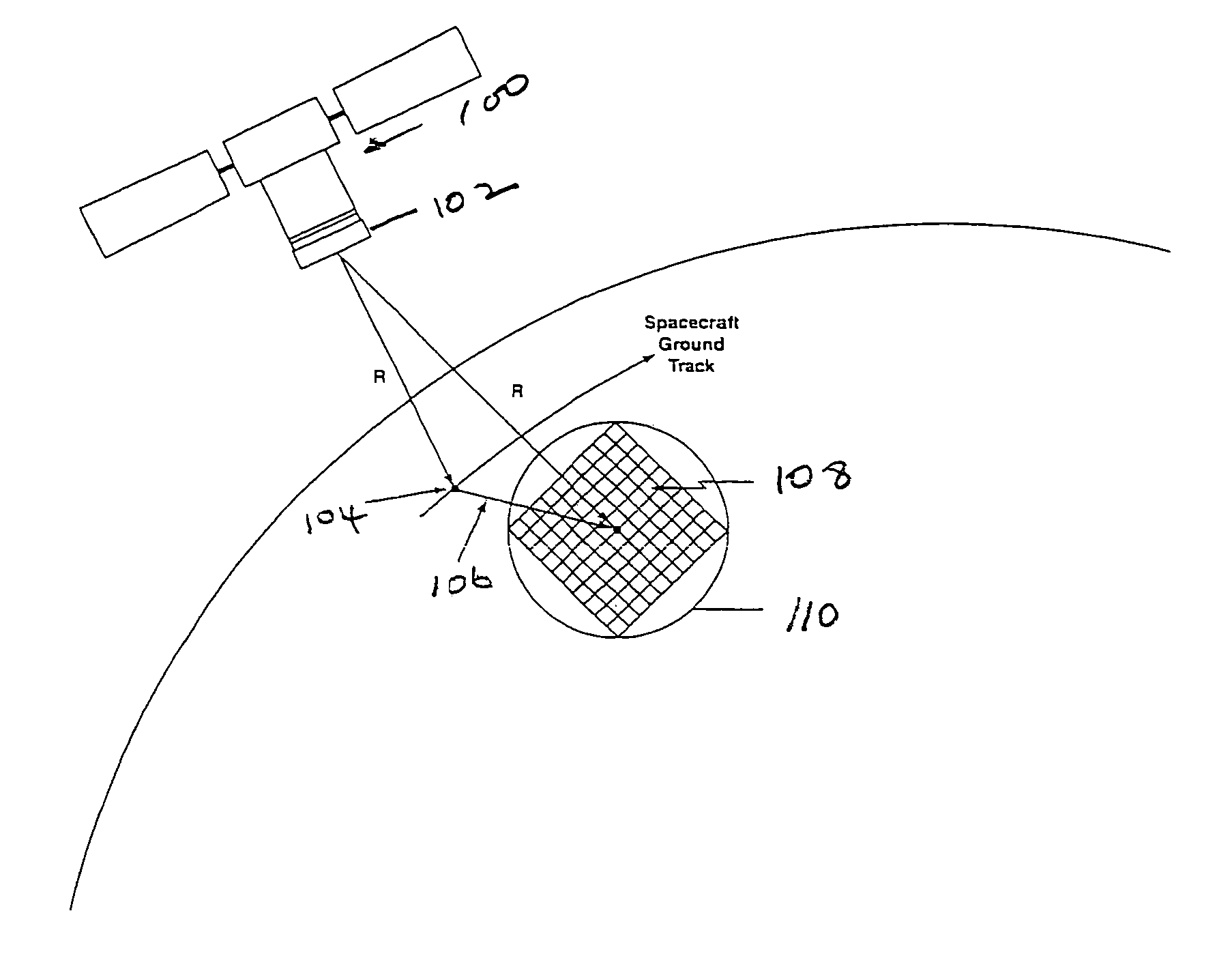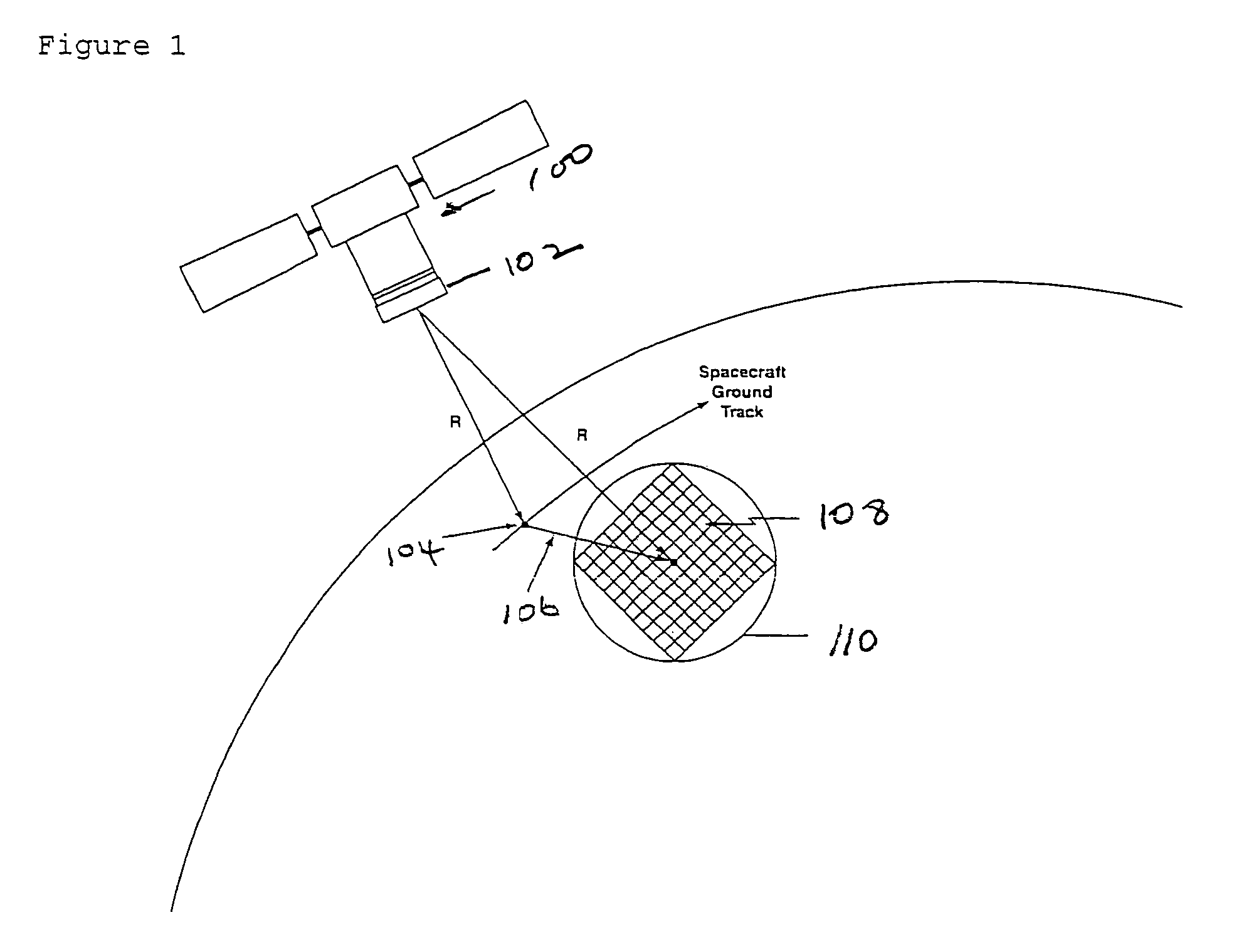Three-dimension imaging lidar
a three-dimensional imaging and lidar technology, applied in the field of optical scanning system, can solve the problems of unqualified engineering and scientific success, inability to generate and the first-generation altimetric approach is not well-suited to generating the few meter-level horizontal resolution and decimeter
- Summary
- Abstract
- Description
- Claims
- Application Information
AI Technical Summary
Problems solved by technology
Method used
Image
Examples
Embodiment Construction
[0025]This invention is directed to an optical scanning system for transmitting and receiving light beams. A three dimension (3-D) imaging lidar overcomes major technological impediments to achieving few meter transverse resolutions. The 3-D imaging lidar includes modest power kHz rate lasers, array detectors, photon-counting multi-channel timing receivers, and dual wedge optical scanners.
Array Detectors
[0026]The unrealistically high laser fire rates and scan rates previously described above can only be ameliorated by making many spatially resolved measurements within a single pulse. This can be accomplished by replacing the single element detector with a highly pixellated array detector. The ground scene is then imaged by the receiver telescope onto the array such that each pixel records the laser photon returns from a single 5 m×5 m resolution element on the planetary surface (along with noise) and inputs them into a separate timing channel. Of course, one must now provide a multi...
PUM
 Login to View More
Login to View More Abstract
Description
Claims
Application Information
 Login to View More
Login to View More - R&D
- Intellectual Property
- Life Sciences
- Materials
- Tech Scout
- Unparalleled Data Quality
- Higher Quality Content
- 60% Fewer Hallucinations
Browse by: Latest US Patents, China's latest patents, Technical Efficacy Thesaurus, Application Domain, Technology Topic, Popular Technical Reports.
© 2025 PatSnap. All rights reserved.Legal|Privacy policy|Modern Slavery Act Transparency Statement|Sitemap|About US| Contact US: help@patsnap.com



